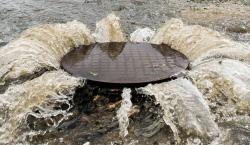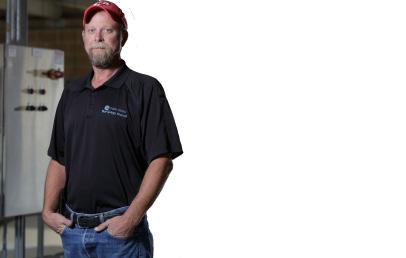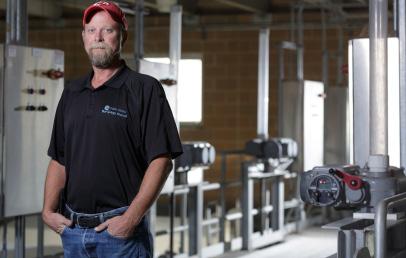
4 minute read
Bad Behavior
Gary Webber, MRWA Wastewater Technician
I don’t watch TV much at all anymore. I guess my smart phone is my media entertainment these days. We have emails, text messaging, Facebook, and other options for keeping up with life and the world around us. If I do turn on the TV or watch a news channel it always has examples of bad behavior going on somewhere seemingly every day. Perhaps this bad behavior is closer to home than one realizes! So, let’s look at the environment around us. How do we impact the environment in our own back yard or community? Every day we have an impact; good, bad, or ugly, on our wastewater system. Stay with me! If our wastewater utility was utilized in a manner for which it was intended and constructed, the impact on our environment would likely be minimal. But we see our wastewater utilities being treated with “bad behavior” more then we care to mention. Let’s look at some examples.
Advertisement
Perhaps the most common bad thing many wastewater system customers do is allow deficient sewer services to go unrepaired. In our smoke testing events across the state, most deficiencies we find in most communities are leaks in customers’ service lines. Most of these deficiencies will be sewer cleanouts that have been broken or cut off at ground level. This collectively allows stormwater to enter the wastewater collection system and drowns the utility with water. The results are, backups into homes and basements, sewer manhole surcharges into streets and ditches, lift station overflows, and hydraulic overloads of the wastewater treatment facility.
Let’s look at what we put in the sewer system! Most recently in connection with the COVID epidemic, we have seen numerous issues with flushable wipes in our wastewater treatment facilities, namely lift stations and manholes. These so-called flushable wipes are not intended for the wastewater system. They create huge issues with stopping everything up, causing plugged pipes, pump failures, overflows to the environment, and increased safety risks for wastewater personnel dealing with these ugly issues. This is not the only trash we see in the treatment facility. Some examples of the other trash that makes its way to the plant are pop cans, shirts, diapers, plastics, sticks; you name it, it somehow gets into the utility, but not on its own! What’s the harm? It all must come out, costing the utility money, and like it or not, this will reflect on the monthly sewer bill to the customer. Some utilities install solids handling at the beginning of the wastewater treatment facility to remove this trash. The cost of installation with engineering and construction can be more than half a million dollars just for the front line of defense. This is just one example of how to deal with bad behavior. Money! Your money!

Another issue for our wastewater utility is toxic substances; oil and grease, industrial wastes, commercial pesticides, and fertilizers to name a few. “Say, What?” Yes, this is blatant bad behavior and can be tracked. It takes a while but if the staff and administration hold their resolve, in time, the source can usually be found. The fact is, if this is found impacting the local receiving stream, it can get enormously expensive for the little community wastewater utility. And unbelievable to me are utilities, staff and administrations, allowing contractors to discharge into their wastewater collection system. Septic haulers hauling leachate from landfills and other sources dump into systems in some communities, and we take it for granted that it’s an ok thing to do. I once sampled a septic tanker who was discharging into a city collection system. I took the sample to the lab to see just what we were dealing with. The Biochemical Oxygen Demand (BOD) and Total Suspended Solids (TSS) were more than 10,000 percent of the normal household strength. That’s ugly folks, but a reality. One truck load was as much BOD and TSS as the whole town generated in one day. The treatment facility cannot treat a slug dose like that. When it attempts to, it compromises the water quality leaving the treatment facility. There are solutions to correcting bad behavior in the wastewater collection system. It starts with educating the staff and administration on solid utility management principles. Understanding the immediate and long-term impact of bad behavior will help improve the outcome. Many wastewater system users may not understand the negative impact they have on the community utility. It is up to the utility operators and administration to educate the customer with some form of involvement or outreach.
The Environmental Protection Agency has a Capacity, Management, Operations and Maintenance Module (CMOM) that can be utilized and implemented at the community utility to help provide a meaningful tool for moving forward on a better path. Some wastewater utilities need a lot of work to restore the utility to a noncompromised condition. Correcting that bad behavior in the community that impacts the wastewater utility, will considerably help to improve our outcome.
Contact Missouri Rural Water Association to help provide guidance on these many utility issues.
Local Government Workers ALWAYS ESSENTIAL

Thank you to all public servants working to keep our communities safe and healthy.

MISSOURI LAGERS 800-477-4334 | molagers.org










